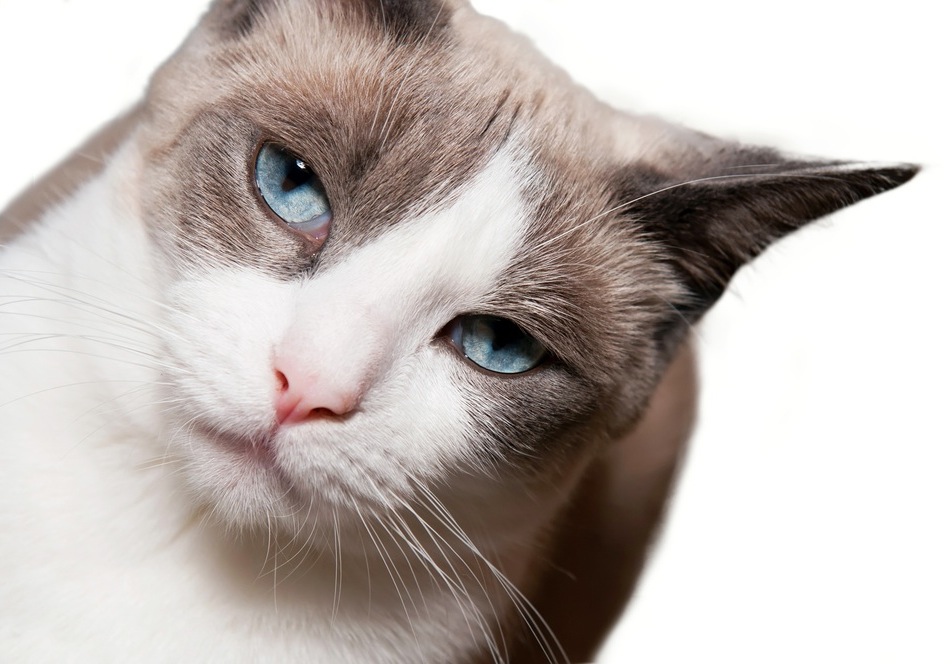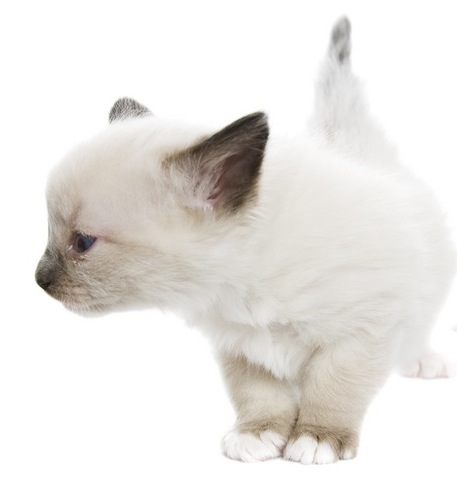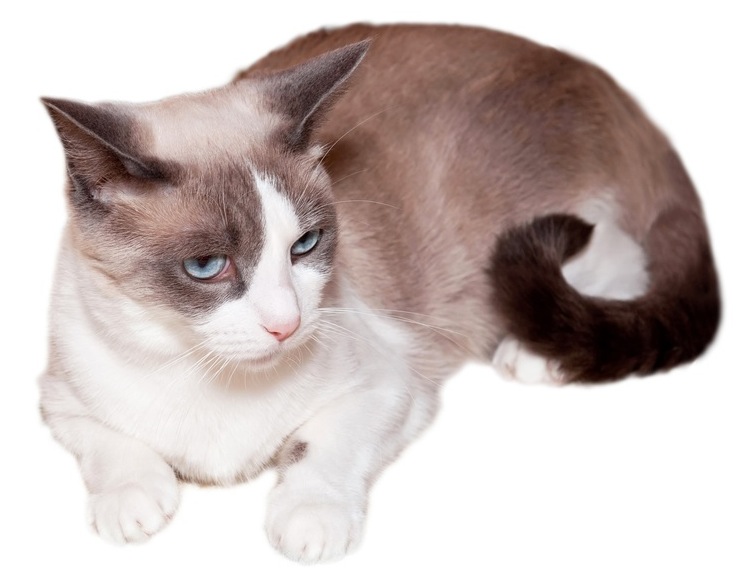Snowshoe

The origins of the snowshoe breed trace back to Philadelphia in the USA. During the 1960s, a breeder called Dorothy Hinds-Daugherty was attracted by the appearance of some Siamese kittens with white markings on their feet. She set out to develop a distinctive breed showing this characteristic, by crossing Siamese and bi-coloured American shorthairs. Other breeders ultimately became involved, notably Vikki Olander in Virginia, who helped to draft the first show standard for the breed.
At first, some Siamese breeders were worried by the possible appearance of unwanted white markings in their bloodlines, because of such crossings, and opposed its development. Since the snowshoe has become a recognisable breed in its own right however, so such opposition has disappeared.
Appearance

Today’s snowshoes are significantly larger and heavier than Siamese, thanks to their American shorthair ancestry. They may weigh up to 5.4kg (12lb) in the case of toms with females being somewhat lighter.
The head of the snowshoe is more rounded than that of the Siamese, which is a further reflection of its American shorthair ancestry. It has a relatively muscular appearance, although its body is not as cobby as that of the American shorthair, retaining some of the elegant shape of the Siamese. The snowshoe also has blue eyes, corresponding to those of the Siamese.
The white markings of the snowshoe are regarded as a very important feature of this breed. The so-called ‘boots’ on the forelegs need to reach the ankles, and extend up behind the hocks on the hind limbs, eliminating the dark markings seen on these parts of the Siamese’s body. Young snowshoes are white at birth, as with Siamese, and it is likely to take at least two years for their markings to develop to their full extent.
Colours and temperament

The evolution of this breed took place slowly at first, and it has only been since the 1980s that the snowshoe has started to gain significantly in popularity, having first obtained championship status for show purposes in 1982.
Today, having established a distinctive appearance for the snowshoe, breeders are now starting to concentrate on increasing the range of colours which are available. These are potentially the same as in the case of the Siamese.
Not all snowshoe conform to the typical patterning. Different varieties have now emerged too, such as the seal show bicolour, seen left.There should also be a clear white, inverted V-shaped area running from the cheeks to the forehead, described as a blaze. In this particular individual, the marking is not perfect.
In terms of temperament, snowshoes are lively, vocal cats, reflecting their Siamese ancestry, as well as being very affectionate. Curious and active by nature, they are not shy cats and will settle well in a home alongside dogs and older children.